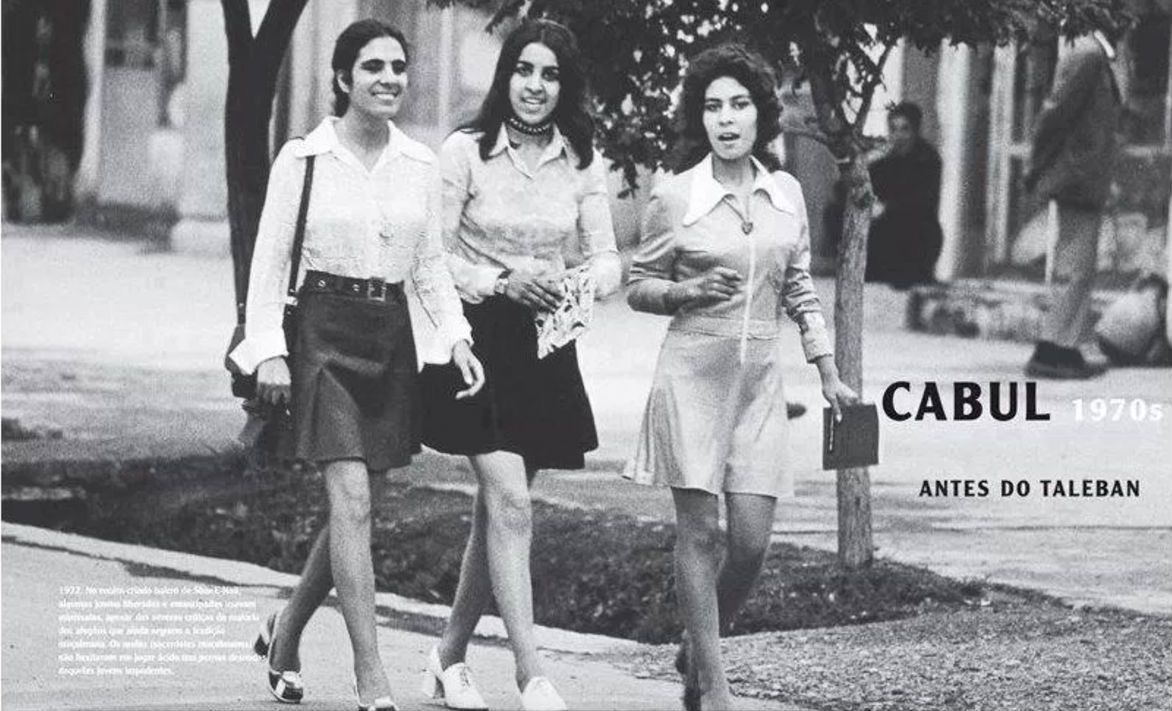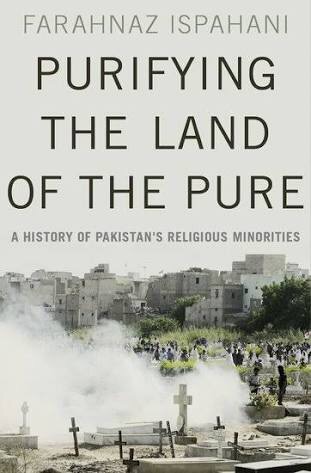Kim Ghattas piece ‘How the Muslim World List the Freedom to Choose’ quotes Farahnaz Ispahani & her book.
A brave new book describes how Pakistan unraveled — and provides a blueprint for understanding declining pluralism across the Middle East.

When national security advisor H.R. McMaster wanted to convince U.S. President Donald Trump that Afghanistan was not hopeless, he whipped out a 1972 black-and-white picture of women in miniskirts on the streets of Kabul.
The point of this exercise was presumably to show that the country once embraced Western ideals and could do so again with America’s assistance. McMaster’s trick worked: Trump ultimately reversed his earlier skepticism about the war effort and decided to raise troop levels. But it also showed the continued limits of America’s understanding of the countries it has sought to remake in its image. The snapshot depicts Kabul’s urban elite — an elite that was unrepresentative, even back then, of the wider Afghan population. Not everyone was walking around in a skirt before the Taliban imposed the burqa.
The photograph, however, does capture something that has been lost not just in Afghanistan since the rise of the Taliban, but also across much of the Muslim world in recent decades: the freedom to choose.
Not every Afghan woman wore a miniskirt in the 1970s, but they could do so without fear of an acid attack or a flogging. Other pictures from that era depict the educational and professional opportunities available to Afghan women. But it’s always the clothes that get the most attention. Pictures of Saudi Arabia from the 1960s and 1970s are also making the rounds these days in the Middle East, showing men and women in bathing suits by the pool and on the jetty of a famous beach resort. Most of those in the pictures look like foreigners — some are airline staff on a break in Jeddah. But Saudis also patronized these beaches, and even if some shook their head with disapproval, the option to go to the beach without fear of violence was there.
Beyond skirts and beaches, the 1960s and 1970s were also a time of vigorous intellectual debate about the role of religion in society. Debates between leftists, secularists, capitalists, Marxists, and Islamists raged across the region, from Egypt to Pakistan. Militant Islamists will dismiss those decades of more progressive, diverse thought and culture as decadent Western imports — the lingering after-effects of colonial influence. But if some of it was certainly emulation, much of it was also indigenous. One of the Arab world’s most famous feminists of the early 20th century was Nazira Zain al-Dine, from Lebanon, who had no connection to the Western feminist movement of the time.
Yet over the course of the last few decades, the space for debate and freedom of choice has become increasingly narrow. Pakistan provides a stark and cautionary tale for other countries about how intolerance gets legitimized. It’s not only when a group like the Taliban seizes power violently that a country loses its more diverse, vibrant past. A slow erosion of progressive norms, a slow shift in beliefs can be just as devastating.
In Pakistan from 1927 to 1985, only 10 blasphemy cases were reportedly heard in court. Between 1985 and 2011, more than 4,000 cases were handled. Even worse, blasphemy, real or alleged, can get you killed in today’s Pakistan. In January 2011, Punjab governor Salman Taseer was killed by his bodyguard for coming to the aide of a young Christian woman who had been charged with blasphemy. Taseer’s killer was sentenced to death, but he was celebrated as a hero by tens of thousands who attended his funeral, and a mosque was built in his name in Islamabad.
The assassination of Taseer — as well as that of Pakistan’s first Christian federal minister, Shahbaz Bhatti, just two months later — shocked Farahnaz Ispahani, a friend of both men. Ispahani, a former journalist, was at the time a member of Pakistan’s parliament serving on the Human Rights Committee. Together, the small group had repeatedly tried to raise the issue of minority rights. In parliament, Ispahani had access to more information than the general public and was shocked about the extent of daily violence against minorities — and that none of her colleagues were willing to discuss the issue.
The assassination of her two friends prompted Ispahani to write “Purifying the Land of the Pure.” The book, published last year, charts the slow death of minority rights and pluralism in Pakistan, and what it means for the future of democracy. The result is a sweeping but concise chronicle of how things unraveled. A minority herself, as a Shiite, Ispahani was careful to avoid polemic and opinion by delivering a thorough, methodically researched work. She and her husband, former Pakistani Ambassador to the United States Husain Haqqani, have both faced death threats for their work and live in self-imposed exile in Washington.
In her book, Ispahani tracks the unraveling to within a few years of the independence of Pakistan. The country’s founder, Muhammad Ali Jinnah — a secular Shiite — envisioned a country where “you are free, you are free to go to your temples, you are free to go to your mosques or to any other place of worship.” But Ispahani writes that “his hopeful declaration of religious pluralism” remains unfulfilled.
The trend toward making Islam a central tenet of life in Pakistan started soon after independence in 1947, a result of Muslim feelings of being victimized by both Hindus and British colonialism in India. By 1973, Islam was declared as the state religion of Pakistan. In 1974, under the ostensibly progressive Prime Minister Zulfiqar Bhutto, parliament declared Ahmadis as non-Muslims. A Muslim movement that started in the late 19th century, Ahmadis follow the teachings of the Quran and consider their founder to be a prophet, upsetting orthodox Muslims who believe Muhammad is the final prophet.
Bhutto found it hard to redefine Pakistani nationalism away from Islamic ideology. He was, Ispahani writes, unable to manage the “delicate balancing act of implementing liberal ideas and appeasing Islamist sentiments.”
By the mid-1980s, hate literature targeting Shiites was proliferating. It fanned the narrative that they were not Muslims, a dangerous charge in a Sunni-majority nation where Shiites made up around 15 percent of the population. Military dictator Muhammad Zia-ul-Haq acquiesced to Sunni militant attacks on Shiites, paving the way for a systematic campaign to eliminate Shiite doctors, engineers, and teachers in Karachi and elsewhere. Today, Shiites and their mosques are still regular targets of deadly attacks: Since 2003, an estimated 2,558 Shiites have been killed in sectarian violence.
Ispahani identifies four stages in Pakistan’s loss of minority rights and growing intolerance. The first stage was the “Muslimization” of society, with transfer of non-Muslim populations out of Pakistan around the time of independence, followed by the rise of an Islamic identity with the loss of East Pakistan. Then came the Islamization of laws under Zia-ul-Haq in the 1980s, and finally the rise of militant, organized violence.
While there was no sudden, overnight transformation, Ispahani nevertheless identifies Zia’s rule as the point of no return. The military ruler Islamized the laws of the country, introducing sharia courts and new Islamic laws known as hudood ordinances, which apply strict Sharia punishments for specific offenses. It was during his time that the blasphemy laws were strengthened, adding life sentences and the death penalty as punishment.
No aspect of culture was spared from the Islamization drive, as movie theaters were shut from Karachi to Peshawar, artists were driven underground and school curricula redesigned to create a “monolithic image of Pakistan as an Islamic state and taught students to view only Muslims as Pakistani citizens.”
Zia’s legacy remains, entrenched in the system and people’s daily lives. Pakistanis under the age of 40 have never experienced any other lifestyle, while the older generations reminisce about a more diverse past — even as they also gloss over some of that past’s shortcomings. But however it came about, Pakistan’s growing intolerance has taken its toll on diversity: Between 1947 and today, minorities went from 25 percent of the population to 3 percent.
“Its about pluralism, that can only happen when there is room for many kinds of people,” Ispahani said. “You cannot have a pluralistic, democratic state when you believe in the purity of your religion.”
The picture that McMaster showed Trump is a good reminder of what once was, but it does not provide a strategy to restore the pluralism that was once an accepted part of life in Pakistan or other countries like Afghanistan, Iraq, or Egypt. Ispahani’s book serves as a reminder that something far more profound than miniskirts has been lost in these countries. Washington’s counterterrorism policies, which help curb groups like the Taliban, are a good start, but they often fail to go any further toward restoring basic norms like respect for diversity. That will ultimately depend on the efforts of the local population themselves.
Those efforts may be able to draw on the power of nostalgia. When people in Pakistan, Egypt, or Afghanistan rifle through the photo albums of their parents and grandparents and wonder what happened to their country, they see skirts or cleavage — but they desire diversity and freedom of choice.
Link to the original article. How the Muslim World Lost the Freedom to Choose

Farahnaz Ispahani’s book “Purifying the Land of the Pure”